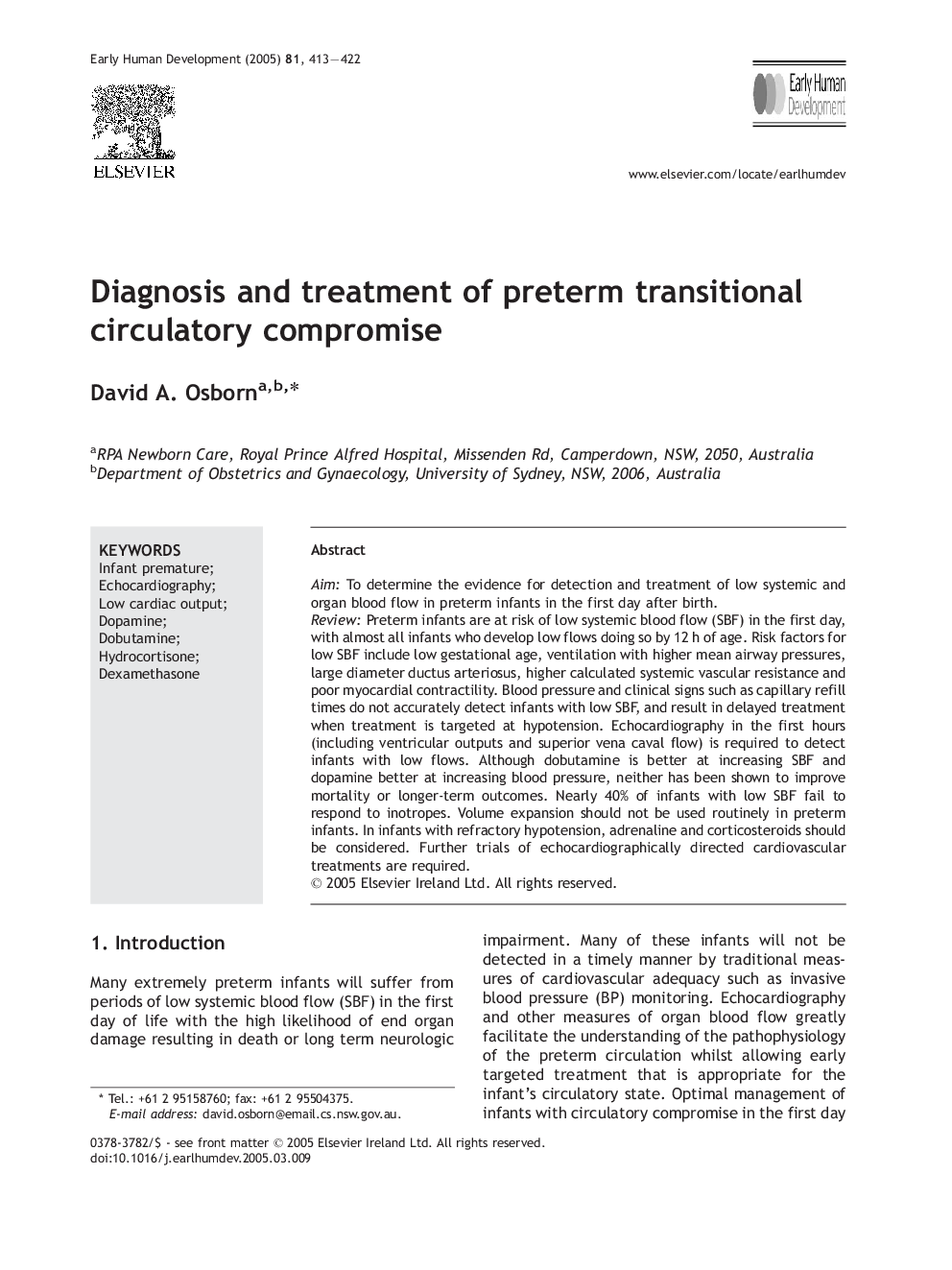| Article ID | Journal | Published Year | Pages | File Type |
|---|---|---|---|---|
| 9318628 | Early Human Development | 2005 | 10 Pages |
Abstract
Preterm infants are at risk of low systemic blood flow (SBF) in the first day, with almost all infants who develop low flows doing so by 12 h of age. Risk factors for low SBF include low gestational age, ventilation with higher mean airway pressures, large diameter ductus arteriosus, higher calculated systemic vascular resistance and poor myocardial contractility. Blood pressure and clinical signs such as capillary refill times do not accurately detect infants with low SBF, and result in delayed treatment when treatment is targeted at hypotension. Echocardiography in the first hours (including ventricular outputs and superior vena caval flow) is required to detect infants with low flows. Although dobutamine is better at increasing SBF and dopamine better at increasing blood pressure, neither has been shown to improve mortality or longer-term outcomes. Nearly 40% of infants with low SBF fail to respond to inotropes. Volume expansion should not be used routinely in preterm infants. In infants with refractory hypotension, adrenaline and corticosteroids should be considered. Further trials of echocardiographically directed cardiovascular treatments are required.
Keywords
Related Topics
Health Sciences
Medicine and Dentistry
Obstetrics, Gynecology and Women's Health
Authors
David A. Osborn,
